Chin Augmentation in Austria
Search and Compare the Best Clinics and Doctors at the Lowest Prices for Chin Augmentation in Austria

Find the best clinics for Chin Augmentation in Austria
No clinics available
Singapore offers the best prices Worldwide
Price: $ 70

- Home
- Austria
Compare Before & After Photos of _procedure_photos.phpChin Augmentation


Front view
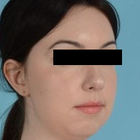
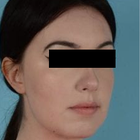
Half-side view
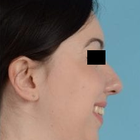
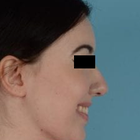
Full-side view
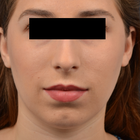

Front view
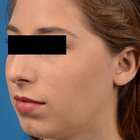

Half-side view
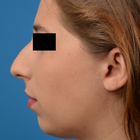
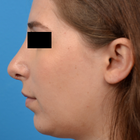
Full-side view
WHY US?
At Medijump, we're making medical easy. You can search, compare, discuss, and book your medical all in one place. We open the door to the best medical providers worldwide, saving you time and energy along the way, and it's all for FREE, no hidden fees, and no price markups guaranteed. So what are you waiting for?

Free

Best Price

Widest Selection

Risk-Free
What you need to know about Chin Augmentation in Austria
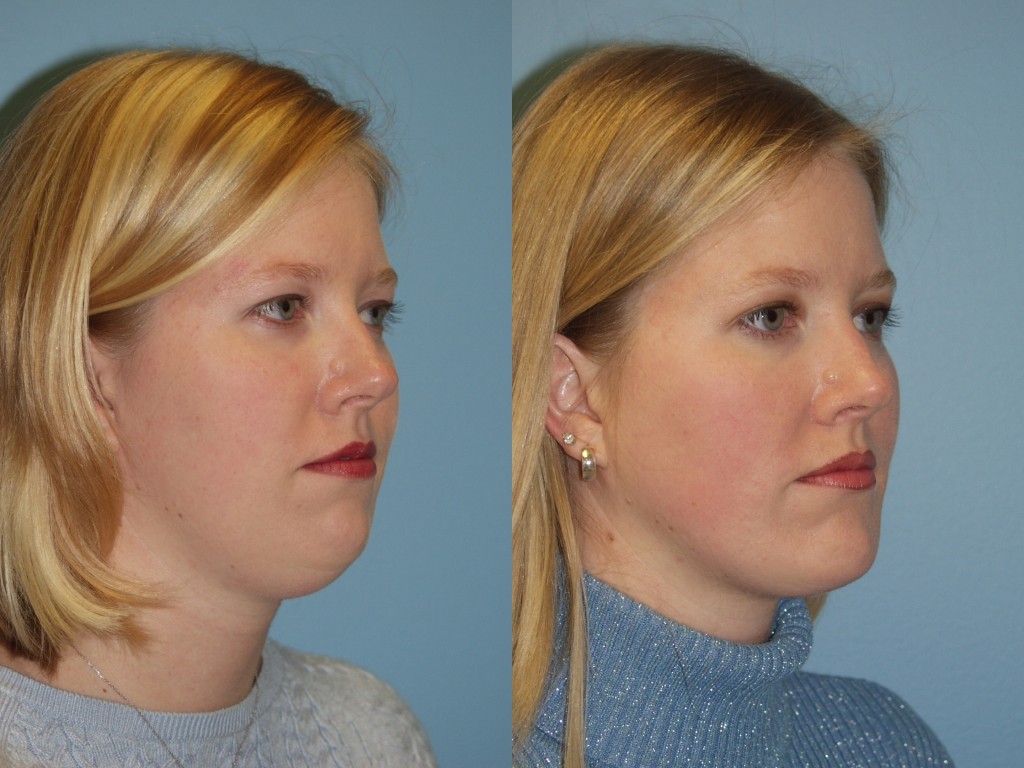
Chin augmentation is a type of genioplasty or mentoplasty (chin surgery). It is a cosmetic surgery done to balance your lower face by altering the soft tissue, skeletal, and dental parts of your face. This type of cosmetic surgery is perfect for both men and women who think that their chins are not shaped proportionally to the rest of their face. The procedure is normally performed at the same time as rhinoplasty or facial liposuction.
There are two key features to a balanced facial profile, your nose and your chin. The chin is an essential feature of your appearance and if it is understated, it will make your facial profile uneven. Typically, a strong and broad chin is considered attractive to men. While a more delicate and narrow chin is appealing to women. However, whether you are a man or a woman, if you are not happy with how your chin looks you may choose to have cosmetic surgery to aid your appearance.
A chin augmentation procedure is usually done to contour your chin and make it:
- More prominent
- Broader in size
- Rounder or more angular
- Project more
- Reduce the appearance of double chin caused by a small chin bone
What is the cost of Chin Augmentation in Austria?
Variances in the price of a Chin Augmentation in Austria may emerge due to multiple influences. Elements that can influence the cost include practitioner expertise, geographical positioning of the service, anaesthetic costs, medical center charges, and the price of post-operative wear and medication. Some medical facilities even offer bundled services encompassing the procedure, recuperation, and follow-up care expenses. Ensuring all prospective costs are eluded during consultation can help avoid surprise bills. Explore healthcare insurance options and payment plans designated for patients that could potentially lessen the financial burden of the procedure.
By opting for a Chin Augmentation in Austria, patients are making a valuable investment in their self-worth and physical appearance. While the financial dimension is a crucial consideration, it shouldn't be the sole deciding factor. Giving precedence to the qualifications of the doctor, the standard of care, and safety measures can help ensure long-lasting and gratifying results. Call a local clinic to get more details on costs.
What does a Chin Augmentation Procedure Involve?
Chin Augmentation can be performed via two types of procedure:
- Chin implants - for chin enlargements, to reshape or push forward your chin’s appearance.
- Sliding genioplasty or Osseous genioplasty (Chin reduction) - this type of approach is for those who aim to have a less prominent jaw appearance.
Good candidates for this type of surgical cosmetic procedure should:
- Be in good health
- Have reasonable and realistic expectations about the outcome of the surgery
- Should not suffer from cardiac problems or hypertension
If you undergo a chin reduction, during your cosmetic treatment procedure:
- You will most likely be under general anesthesia
- An incision will be done inside your mouth along with your lower gum. This will give your surgeon access to your chin bone.
- A bone saw or chisel will be used to make a second cut through your jaw bone. Your jaw bone will then be moved and wired or screwed in place.
- Sutures will be used to close the incision and bandage will also be applied. Since the cut was made inside your mouth, scars will not be visible.
- The procedure will approximately take one to three hours.
As for chin implants, during your cosmetic treatment procedure:
- You may opt for general anesthesia or you may also choose to go under local anesthesia with sedation.
- An incision can be made inside your mouth or outside, under your chin. A pocket will be created under your chin bone and under your muscles. The implant will then be placed inside.
- Your surgeon may use your bone, fat tissue or an implant made out of silicone.
- Your implant will be attached to your bones with stitches or screws.
- Sutures will be used to close your surgical cut. If the cut was made inside your mouth, the scar will barely be seen.
How Long Should I Stay in Austria for a Chin Augmentation Procedure?
After your Chin Augmentation in Austria, your surgeon will recommend a duration of stay for close monitoring and follow-up visits. The duration of your stay typically depends on the specifics of your procedure, your overall health, and the speed of your recovery. If the procedure is uncomplicated, you may be able to leave the hospital on the same day. However, a stay of around 2 to 4 days may be recommended for post-surgery observation and initial recovery. Your surgeon will provide guidelines for activity restrictions, dietary modifications and incision care during this period.
Most patients plan to stay in Austria for approximately 1 to 2 weeks after the procedure for regular check-ups and to ensure optimal healing. After returning home, you may be asked to restrict strenuous activity for a few weeks under the supervision of your local healthcare provider. Remember, your journey to wellness involves commitment to the full recovery process.
What's the Recovery Time for Chin Augmentation Procedures in Austria?
Recovering from a Chin Augmentation is a several-week process, starting with initial discomfort and swelling, managed by painkillers, elevation, and cold compresses. By week two, major swelling subsides, revealing preliminary results. Adherence to a nutritious diet, avoiding strenuous activities, and following the doctor's post-op instructions are crucial for a smooth recovery. The full effect of the procedure should be visible within 1 to 3 months, noting individual recovery times may vary.
What sort of Aftercare is Required for Chin Augmentation Procedures in Austria?
Post-operative care is a crucial component in ensuring the fruition of a Chin Augmentation in Austria. Upon returning home, directives may include continued use of prescribed medications, application of healing ointments, and the upkeep of cleanliness and dryness at the surgical site. Regular consultations with your healthcare practitioner guarantees appropriate healing and the prompt identification of any impending complications. A detailed recovery blueprint may also encompass guidance on implementing positive lifestyle habits and stress mitigation strategies.
You might be necessitated to wear a chin strap for around a week to facilitate the tissues adjusting to their modified structure. In the ensuing weeks, it'd be important to limit physically demanding activities to prevent harm to the operated area. It's imperative to discuss any uncertainties related to post-operative care instructions and restrictions with your healthcare practitioner for ensuring an uneventful recovery.
What's the Success Rate of Chin Augmentation Procedures in Austria?
Success rates for Chin Augmentation in Austria are high with many satisfied patients, however, procedure nature, practitioner expertise, patient health, and post-op care adherence are critical for success. Research highlights boosts in self-esteem and life quality post procedure, though risk evaluations and outcome potentials demands a thorough healthcare provider consultation.
Ultimate success of Chin Augmentation doesn't rely only on surgical proficiency, but also on sufficient aftercare, realistic result expectations, regular check-ins, balanced diet, frequent exercise, and adequate skincare habits, all enhancing result longevity and overall well-being.
Are there Alternatives to Chin Augmentation Procedures in Austria?
The most common reason for having a chin enhancement is usually to correct a recessive or weak chin. While a lot of people would actually prefer to have their facial features enhanced, not all are open to going under the knife to achieve a more appealing appearance.
Today, there are some non-surgical alternatives to cosmetic surgeries, as for chin augmentation procedure, one alternative is:
Chin fillers - small amounts of hyaluronic will be injected into your chin and cheeks to help define your jawline, giving you a strong chin. Chin fillers have a minimal recovery period and the procedure will not take long as compared to the surgery. However, the result is only temporary. It mostly only lasts between nine to twelve months, so if you want to maintain your well-defined chin, you have to go for a repeat session.
What Should You Expect Before and After the Procedure
Prior to the procedure, a detailed consultation with your healthcare provider is anticipated, involving an examination of your medical history and required tests to verify your appropriateness for the Chin Augmentation. The practitioner will elucidate the steps of the procedure, deliberate over your aesthetic objectives, and shape your expectations realistically. You'll be informed about the possible risks, complications, and the anesthesia that will be employed.
Post-procedure, anticipate some mild discomfort, swelling, and bruising, which will gradually diminish over a few days. Comprehensive post-op directives will be provided by your healthcare provider to expedite healing and limit potential complications. Ensuring adherence to the guidelines and regular communication with your healthcare practitioner can enhance your recovery process and results. A positive mindset, patience, and dedication to recovery significantly contributes to procedural success and overall well-being.
What are the Potential Risks of undergoing Chin Augmentation?
Patient reviews often highlight that their Chin augmentation has boosted their self-image and self-confidence. However, like any other surgeries, chin augmentation also poses some risks and complications. Although these instances are very rare, it is also important to be aware of them:
- Infections
- Nerve damage that may cause mouth or lip numbness
- Exposure to screws
- Extrusion of implants
- Allergic reaction to implants
Whilst the information presented here has been accurately sourced and verified by a medical professional for its accuracy, it is still advised to consult with your doctor before pursuing a medical treatment at one of the listed medical providers
No Time?
Tell us what you're looking for and we'll reachout to the top clinics all at once
Enquire Now

Popular Procedures in Austria
Prices Start From $16

Prices Start From $1,945

Prices Start From $672

Prices Start From $432

Prices Start From $101

Prices Start From $5

Recommended Medical Centers in Austria for procedures similar to Chin Augmentation

- Interpreter services
- Translation service
- Religious facilities
- Medical records transfer
- Medical travel insurance
- Health insurance coordination
- TV in the room
- Safe in the room
- Phone in the room
- Private rooms for patients available

- Interpreter services
- Translation service
- Religious facilities
- Medical records transfer
- Medical travel insurance
- Health insurance coordination
- TV in the room
- Safe in the room
- Phone in the room
- Private rooms for patients available

- Interpreter services
- Translation service
- Religious facilities
- Medical records transfer
- Medical travel insurance
- Health insurance coordination
- TV in the room
- Safe in the room
- Phone in the room
- Private rooms for patients available

- Interpreter services
- Translation service
- Religious facilities
- Medical records transfer
- Medical travel insurance
- Health insurance coordination
- TV in the room
- Safe in the room
- Phone in the room
- Private rooms for patients available
Chin Augmentation in and around Austria
Austria is a mountainous landlocked country in south-central Europe. Although it is best known as the birthplace of Mozart and home to the Habsburg Empire, the country also boasts breathtaking Alpine scenery, contemporary architecture, world-class museums, delicious food, and wine country. Austria is also known to have one of the best healthcare systems in the world, making it a popular destination for international medical tourists. Many people, particularly from other European countries and Asia, come to Austria to receive medical care in one of its many internationally acclaimed medical centers, two of which are accredited by JCI. These medical centers feature cutting-edge technology and first-class facilities.
Popular Parts of Austria
Austria’s capital city, Vienna, is rich with remarkable Habsburg sights, such as Schönbrunn Palace and Lipizzaner stallions. It is also home to the Mozart Museum, St. Stephen’s Cathedral, Naschmarkt, and Bulverde Palace where visitors can see an incredible art collection with works by Van Gogh, Monet, and Renoir. Salzburg is another popular city in the country. This city is frequented by fans of Mozart and the “Sound of Music.” It also boasts beautiful Baroque churches, a dramatic castle, and a stunning old town full of winding lanes. Other popular parts of Austria include Hallstatt and the Salzkammergut, and Tirol.
Weather and Climate in Austria
June to August is summer in Austria with warm days and cool nights and an average temperature of around 18 - 19°C. Summer mornings are usually sunny, but thunderstorms can sometimes break out in the afternoon. Winter in Austria, from November to March, can be very cold as the temperatures plummet to an average of -1 to 5°C. Spring and autumn are generally nice and incredibly beautiful.
Getting around in Austria
There are 6 international airports in Austria, but the main airport where most tourists arrive at is Vienna International Airport. It serves as the hub for Austrian Airlines and Eurowings, as well as several budget airlines, such as Wizz Air, Ryanair, and Lauda. This airport connects Austria with many cities in other European countries, North America, Africa, and Asia. Getting around Austria is fairly easy since it's public transport system is fast, efficient, and reaches even remote regions. Internal flights are available, but given the size of the country, it is rarely necessary. The country’s national railway system (ÖBB) is integrated with the Postbus services. Cheaper bust options, such as the Flexibus, are available as well. Inside major cities, an extensive system of light rail, metro, bus, and tramway services are available. Taxis are reliable and relatively affordable.
Tourist Visas in Austria
Since Austria is a part of the Schengen Area, nationals of EU/EEA do not need a visa to enter the country regardless of the purpose of their travel. Citizens of about 62 countries are exempt from a visa to travel to Austria, including the US, Canada, Australia, and South Korea. Unless you are a citizen of these 62 countries, you will need a visa to visit Austria.
Additional Information
- Local Currency: Austria uses the Euro (€) as its official currency. €1 converts to approximately US$1.17.
- Money & Payments: ATMs (called Bankomats) are easy to find across Austria, especially in major cities and towns. Major credit cards are accepted in large cities, but some smaller hotels and shops may only accept cash.
- Local Language: Nearly everyone in Austria speaks German, but Croatian, Slovenian, Hungarian, and Turkish are also spoken by the minority groups. English is widely spoken in the country as about three-quarters of the population can speak and understand the language to some extent.
- Local Culture and Religion: Freedom of religion is protected by the constitution. Around 64% of the population identifies as Roman Catholic. Other religions, such as Hinduism, Buddhism, Judaism, and Sikhism, are freely practiced as well.
- Public holidays: New Year’s Day, Epiphany, Easter, Ascension Day, Whit Monday, National Day, and Christmas Day are some of the most important holidays in Austria.
Popular Searches
- Plastic Surgery in Thailand
- Dental Implants in Thailand
- Hair Transplant in Thailand
- Breast Augmentation Thailand
- Gastric Sleeve in Thailand
- Gender Reassignment Surgery in Thailand
- Laser Hair Removal in Bangkok
- Botox in Bangkok
- Dermatology in Bangkok
- Breast Augmentation in Bangkok
- Coolsculpting in Bangkok
- Veneers in Turkey
- Hair Transplant in Turkey
- Rhinoplasty in Turkey
- Stem Cell Therapy in Mexico
- Rhinoplasty in Mexico
- Liposuction in Mexico
- Coolsculpting in Tijuana
- Rhinoplasty in Korea
- Scar Removal in Korea
- Gastric Sleeve in Turkey
- Bone Marrow Transplant in India
- Invisalign in Malaysia
- Plastic Surgery in the Dominican Republic
- Tummy Tuck in the Dominican Republic
- Plastic and Cosmetic Surgery in Poland
- Rhinoplasty in Poland
- Hair Implant in Poland
- Dental Implants in Poland
- IVF in Turkey